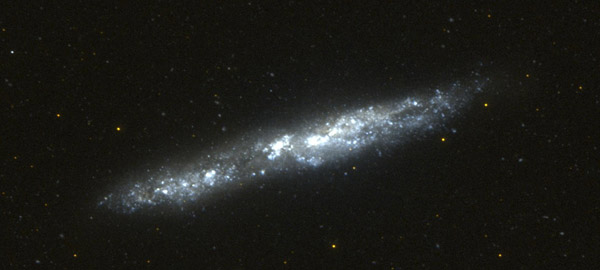

Best space phenomena zip#
The meteoroids’ high speed means they zip across the sky in a second or so, sometimes even less. The air heats up so much that it glows and rapidly vaporizes the meteoroid about 90 to 100 km above the ground. But they hit Earth’s atmosphere at the hypersonic speed of 200,000 kilometers per hour, where they tremendously compress and heat the air they encounter. In these streams, even the largest meteoroids-the technical term for the solid bits of rock-tend to be small, only about the size of a grain of sand. If the comet’s orbit intersects that of Earth, then our planet plows through this stream of material at the same time each year. And if they get close to our home star, the heat turns some of their ice directly into a gas (a process called sublimation), which releases tiny grains of rock. Comets tend to have long, elliptical orbits around the sun. Meteors in showers are small bits of material shed by a comet, which is basically a collection of rocks and ice all smushed together like a dirty snowball. When my daughter was little, I would take her out to watch the Perseids it was fun for both of us, and she loved breaking the going-to-bed rules for a special occasion.

Having friends or family along is a good idea, too! Companionship helps the time pass during lulls in the spectacle overhead, and it’s fun when everyone sees the same bit of cosmic fluff streaking across the sky. And even in August the nights can be cool, so having a hot beverage on hand always helps (and makes things more festive). You’ll probably want to bring something comfortable to sit or lie down on. EDT, but you’ll still see some meteors even if you go out earlier. The best show will occur after about 2 to 3 A.M. Given the celestial geometry of this year’s event, the ideal time is after midnight-the later, the better. Give it time, and you’ll be oohing and aahing with everyone else.Īlso important is when to go out. But that’s fine! When it takes a minute or two between meteors, each one becomes a bit more special-and surprising. So don’t expect anything like meteor showers in the movies, where shooting stars streak across the sky every few seconds. Even at its peak, showers of meteors such as the Perseids will only produce perhaps one shooting star per minute, and even half that number is considered a decent show. Nearby trees or buildings will block your view toward the horizon, so try to find an open field or even a parking lot (if it’s not surrounded by lights!). Meteors can appear anywhere in the sky, so you want to see as much of it as you can.

You don’t need to set up camp on a remote mountaintop or anything like that, but being far enough from glowing billboards and streetlights to be able to see, say, magnitude 4.0 stars is a big help.

The necessity of darkness should be obvious: most meteors are so faint that you need a decently dark sky to see them. The three most important things required are a dark site as far from city lights as possible, a wide-open sky and patience. Meteor showers are one of the easiest astronomical phenomena to observe. And with no bright moon to interfere with this year’s show, it’s a great time to go outside and-at least figuratively-see the sky fall. It is one of the best, most reliable meteor showers. It’s perfectly safe! This weekend, August 12–13, is the peak of the Perseid meteor shower, which offers dozens of “shooting stars” per hour. During the next few nights, you can witness countless pieces of a comet rain down on Earth.īut don’t be alarmed.


 0 kommentar(er)
0 kommentar(er)
